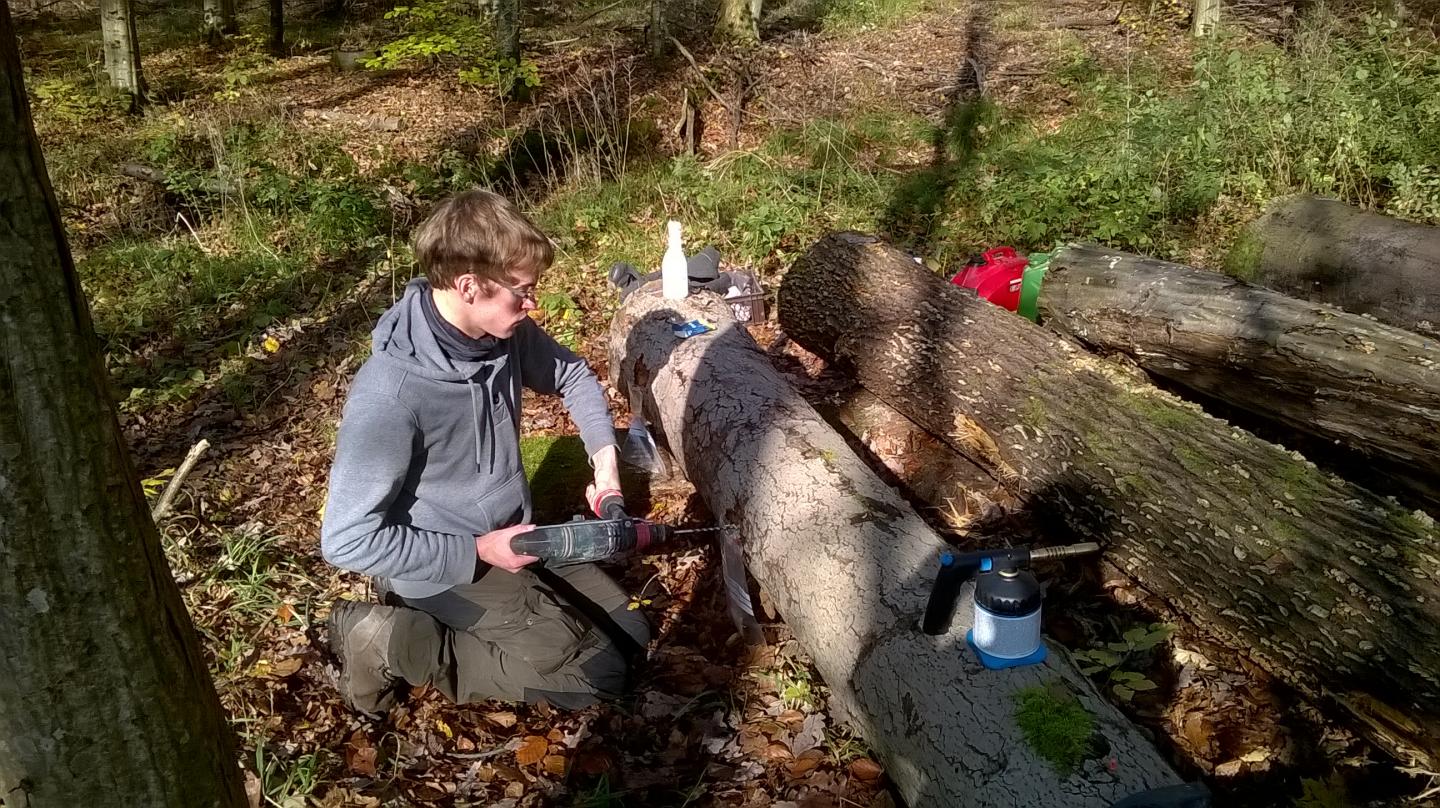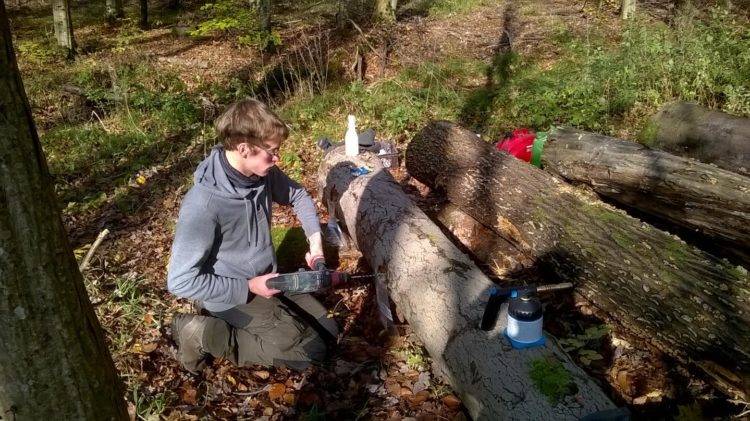
Credit: (Photo: Elisa Stengel)
Waldsterben 2.0 – this term has made the rounds in Germany. It refers to the death of various tree species as a result of the record summer of 2019 with heat, drought and bark beetle infestation.
“However, tree dieback is not only bad, since many insects and fungi in German forests depend on dead wood. Today, dead wood amounts in many places are still below the average of natural forests” says biologist Dr. Simon Thorn from Julius-Maximilians-Universität (JMU) Würzburg in Bavaria, Germany. Dead wood is very important for biodiversity in forests.
Combining nature conservation and profitability
From which tree species dead wood is needed and under which conditions should it be located in order to promote biodiversity in forests as much as possible? According to Dr. Thorn, very little is known about this question so far. To address this research gap, the Forest Enterprise Ebrach and the Ecological Station of JMU in the Steigerwald have initiated a research project in 2015.
The Forest Enterprise Ebrach attempts to enrich dead wood and thereby protect insects and fungi. However, these nature conservation measures are associated with significant losses of income associated to forestry products. “We would like to apply nature conservation in an efficient way, so that it can be conductedwith minimal economic effort,” says Ulrich Mergner, head of the forest enterprise.
Experiment in the Ebrach Forest
To achieve this goal, an experiment was started five years ago. The foresters laid out six trunks of six different tree species either in the sun, in the shade or under artificial shade. “This offered an uncomplicated and unique way to investigate an exciting scientific question,” says Thorn, who coordinates the scientific supervision of the experiment at the JMU’s Ecological Station.
During the first three years, it became apparent that many rare species appeared, especially in sun-exposed dead wood. However, there are also numerous species that prefer shaded trunks. PhD student Sebastian Vogel is currently summarising the results; his work is funded by the German Federal Environmental Foundation (DBU).
Half a million euros raised
“To develop the project and to understand the ecological mechanisms that cause the differences between light and shade, we need to go deeper into the details. To do this we need money,” says Simon Thorn. And he has now raised this money – around half a million euros – from the Bauer and the Stemmler Foundations and the German Research Foundation (DFG).
“Research funds are fiercely contested and are awarded especially when good preliminary work exists. We have only been able to do this because of the support of the Forest Enterprise Ebrach,” says the project manager. “Thanks to this funding, for the first time we can also study bacteria and fungi, which develop in dead wood. Many of these species are not visible to the eye, but play a crucial role in the decomposition of dead wood”.
The dead wood project in the Ebrach Forest will now be conducted until 2023. Forest manager Mergner is also pleased about this: “Nature and species protection is not a ‘one-hit wonder’ for us. Therefore, we are glad that we can expect long-term research results”.
###
Media Contact
Dr. Simon Thorn
[email protected]
49-931-318-3057
Original Source
https:/






